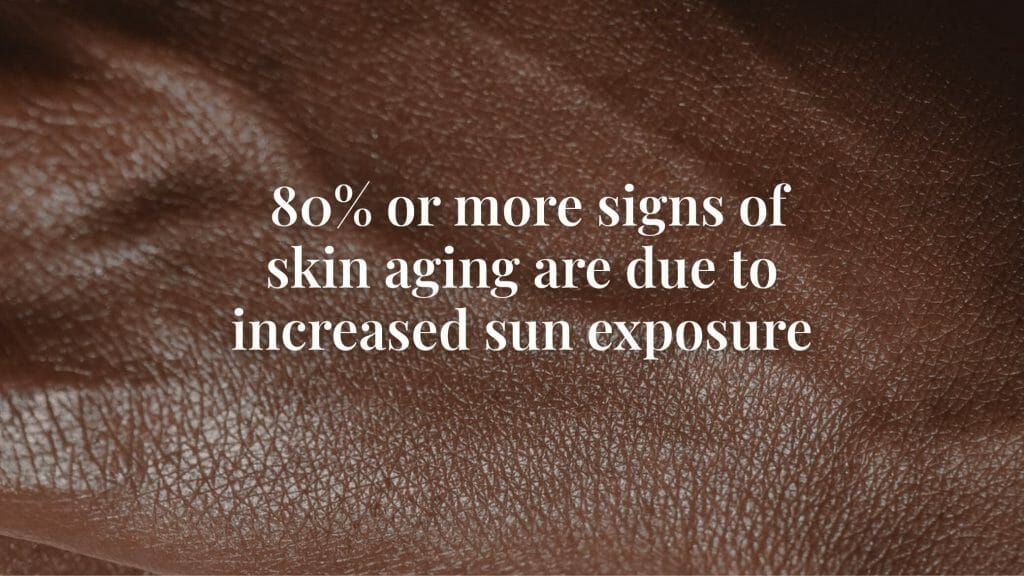Applying sunscreen not only prevents your skin from burning and the pain that it brings, but it’s a proven fact that regular sunscreen use also slows the facial aging process by 80%. With a statistic like that, there’s no reason why you should not be using sunscreen every day.
However, just how much sunscreen should you apply to your face to reap the benefits and prevent skin damage?
The Right Sunscreen Formula for Your Skin
Along with knowing how much sunscreen to apply to your face, you should also ensure you use the best sunscreen formula for your skin.
There are two main types of sunscreen; chemical and mineral. Both provide broad spectrum protection from UVA rays (the aging rays) and UVB rays (the burning rays), but they do so in a different way.
Difference between Chemical vs. Mineral Sunscreen
The active chemical ingredients in chemical sunscreens absorb and penetrate into your skin. This allows the product to absorb and filter out the sun’s damaging UV rays.
Mineral sunscreens are more natural, using mineral-based ingredients like titanium dioxide and zinc oxide for protection. What’s more, Black Girl Sunscreen also uses sunscreen ingredients, like Avocado and Jojoba oils, to promote soft and supple skin.
Mineral sunscreens don’t absorb UV rays into your skin but instead reflect them away by working as a barrier between your skin and harmful UV rays.
Choosing Your Sun Protection Factor (SPF)
Choosing your SPF factor will depend on several things. Firstly, everyone has a different level of sensitivity to the sun. So if you burn easily, you should always opt for the highest SPF factor.
Secondly, you’ll need to use a higher SPF in the summer, but you can switch to a lower one in the colder seasons when the sun’s rays are not so intense.
We recommend using the daily SPF 30 facial sunscreen for everyday use as a general guideline. Then, if going on vacation, heading to the beach, or staying in direct sunlight for an extended period, opt for SPF 45 or SPF 50.

The Right Amount of Sunscreen to Apply
You can find various guidelines regarding how much sunscreen to apply to your face. These are three of our favorites.
Two Finger Rule
Many beauty bloggers and skincare enthusiasts swear by the “Two-Finger Rule,” which means measuring the amount of sunscreen based on the size of your index and middle finger. Using the two-finger rule, you’ll have enough to cover your face, neck, and head.
Another reason we like this method is that it gives a quantity that is most suited for you individually. Plus, unlike a standard measurement such as a dessert spoonful, this method works for children and adults.
The Shot Glass Method
Another way to measure how much SPF to use is with a shot glass. This will result in approximately an ounce of sunscreen, which experts say is the best protection for your entire body and face.
Nickel Sized Dollop
If you’re interested in a specific sunscreen measurement for your face, it’s 0.04 ounces (or 1.2ml). This is because your face is 4% of your entire skin’s surface, so 4% of one ounce is 0.04 ounces. This equates to a nickel-sized dollop, which is an easy way to measure out when you’re at the beach.
Final Thoughts
Knowing how much sunscreen is enough to use is just one aspect of protecting your bare skin and exposed areas of the face. Choosing a high-quality sunscreen that does not harm your skin, like Black Girl Sunscreen, will keep your face looking healthy and young.
- Black Girl Sunscreen Moisturizing SPF 30 – Filled with ingredients that will protect your skin from the sun, our SPF 30 doubles as a moisturizing lotion that dries completely clear. Making it perfect to use before any outdoor activity or as a primer under your favorite makeup products.
- Black Girl Sunscreen Make it Matte™ SPF 45 – Black Girl Sunscreen’s lightweight, gel formula protects against sun damage leaving no white residue and a mattifying finish for oily skin. Make it Matte is a broad-spectrum SPF 45 infused with ingredients such as aloe, squalene, and shea butter that help moisturize, soothe and heal your skin.
- Black Girl Sunscreen Make it Hybrid™ SPF 50 – Black Girl Sunscreen’s lightweight mineral and synthetic formula with zinc-oxide is designed to protect against sun damage leaving no white residue and a dewy finish.
- *Bonus* Make It Pop™ Sun Gloss – A revolutionary sun gloss for protected, glossy, and poppin’ lips. Formulated with Broad Spectrum SPF 50, hyaluronic acid, tripeptides, and jojoba. This sun gloss will make you feel good and look good while protecting your lips from the sun.
What’s more, incorporating sunscreen application into your daily skincare routine will boost the benefits further. Regular sunscreen use is an important step that provides the needed level of protection for both your face and body.


